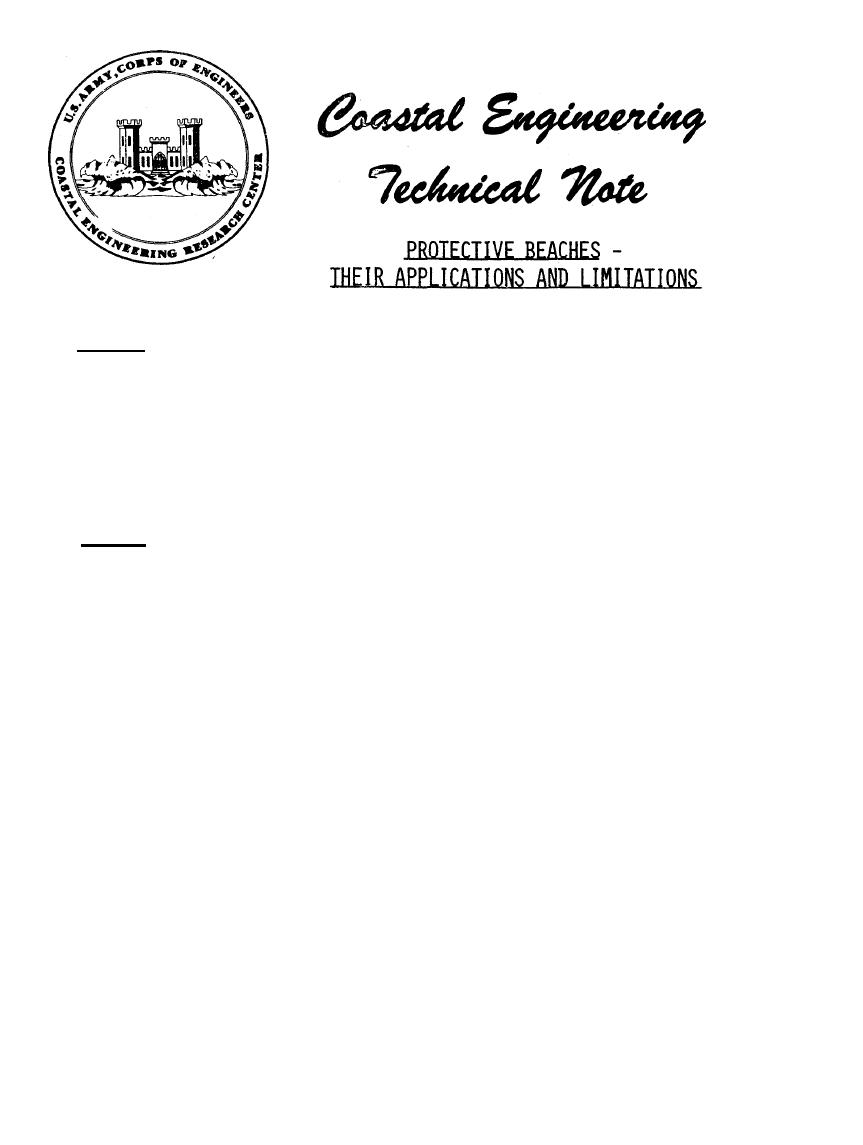
CETN-III-11
3/81
To describe the functional applications, limitations, and the
PURPOSE:
general design concepts of protective beaches. This note is intended to
provide a brief, general discussion of protective beaches for Corps per-
sonnel who do not have a background in the functional design of coastal
structures, and to provide useful information for answering inquiries from
the general public concerning the construction and use of protective
beaches.
FUNCTIONAL APPLICATIONS: A protective beach (or beach fill) is a deposit
:
of sand, artificially placed along a shoreline to provide a buffer zone
between the sea and the backshore. It can be classified as a flexible
structure since its shape is modified by wave action, tidal currents, lit-
toral currents, or wind. The protective beach is composed of two func-
tional types of beach fill: (1) beach restoration including landfills on
beachfront property or that material placed on the beach to restore an
eroded beach to the desired profile and (2) beach nourishment which is
added as a sacrificial fill to be replaced when it has been eroded away
(see the Figure).
When properly designed and maintained, protective
beaches can provide shore protection by dissipating wave energy and can
also function as a recreational facility.
A protective beach will change
its shape to adapt to changing wave conditions, reflecting less wave energy
and causing less erosion impact to adjacent beaches than other coastal
structures.
A protective beach does not impede the flow of longshore currents carrying
sand in-the way that a groin does; thus beach fill does not cause erosion to
downdrift shorelines. As discussed in Coastal Engineering Technical Note
III-10 (Groins), beach fills are sometimes used in conjunction with groins.
An important advantage of protective beaches is that they remedy the basic
U.S. Army Corps of Engineers, Coastal Engineering Research Center, Kingman Building, Fort Belvoir, VA 22060



 Previous Page
Previous Page
